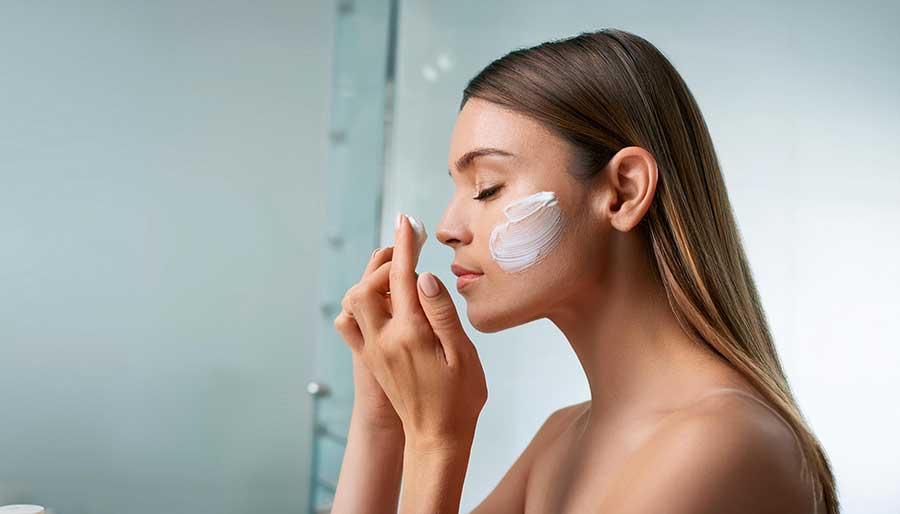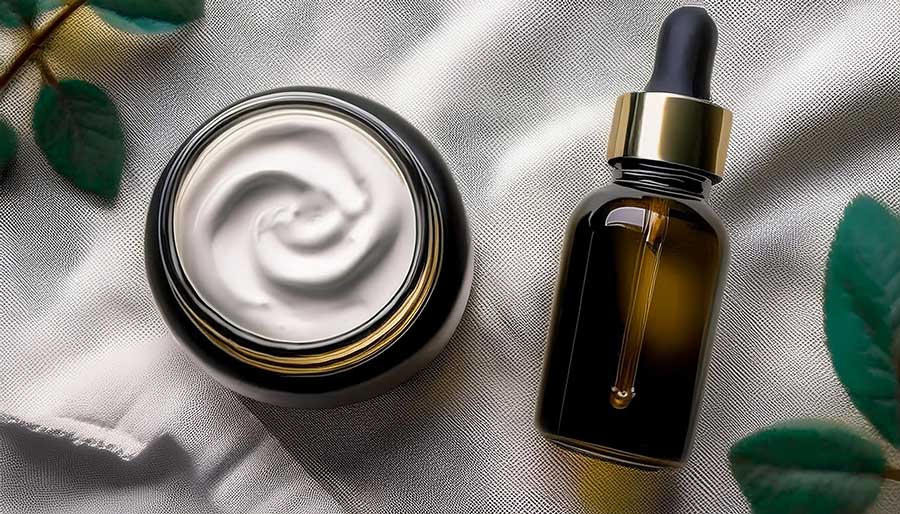
Fatty Acids in Skincare
Fatty acids play an important role in skincare – by providing essential benefits that contribute to healthy, resilient skin. These naturally occurring acids are integral to maintaining the skin’s barrier function, locking in moisture, and protecting against environmental damage. Fatty acids help in reducing inflammation, improving skin texture, and enhancing overall hydration. Getting to know the different types of fatty acids and their unique properties helps you to choose the right skincare products for your specific skin needs.
While fatty acids have great power, some forms can also cause havoc, so we’ve included comedogenic ratings (ie, will it clog pores and trigger acne) and the potential for irritation for each one:
1. Linoleic Acid (Omega-6)
- Sources: Sunflower oil, safflower oil, evening primrose oil
- Benefits:
- Essential for maintaining the skin’s barrier function.
- Reduces water loss from the skin.
- Anti-inflammatory properties.
- Beneficial for acne-prone skin as it helps regulate sebum production.
- Comedogenic Rating: 1
- Irritancy Potential: Low
- Details: Generally well-tolerated and beneficial for acne-prone skin due to its light texture and non-comedogenic properties.
2. Linolenic Acid (Omega-3)
- Sources: Flaxseed oil, chia seed oil, fish oil
- Benefits:
- Anti-inflammatory effects.
- Improves skin barrier function.
- Soothes irritated and sensitive skin.
- Helps reduce signs of aging by maintaining skin elasticity and hydration.
- Comedogenic Rating: 1
- Irritancy Potential: Low
- Details: Known for its anti-inflammatory properties and low likelihood of causing irritation.
3. Oleic Acid (Omega-9)
- Sources: Olive oil, avocado oil, macadamia nut oil
- Benefits:
- Excellent emollient properties, making it great for dry and aging skin.
- Penetrates deeply into the skin, providing long-lasting moisture.
- Can enhance the absorption of other active ingredients in skincare formulations.
- Has anti-inflammatory and wound-healing properties.
- Comedogenic Rating: 2-3
- Irritancy Potential: Low to Moderate
- Details: Heavier than linoleic acid and may cause breakouts in acne-prone skin. Generally well-tolerated but can be irritating for some sensitive skin types.
4. Palmitic Acid
- Sources: Palm oil, cocoa butter, animal fats
- Benefits:
- Acts as an emollient and helps to lock in moisture.
- Enhances the skin’s barrier function.
- Provides a protective layer on the skin, preventing external damage.
- Comedogenic Rating: 2
- Irritancy Potential: Low
- Details: Commonly used in skincare and generally well-tolerated, though it may be comedogenic for some people.
5. Stearic Acid
- Sources: Cocoa butter, shea butter, animal fats
- Benefits:
- Acts as an emollient and thickening agent in skincare formulations.
- Provides a smooth, velvety texture to products.
- Helps to maintain the skin’s barrier and protect against water loss.
- Comedogenic Rating: 2-3
- Irritancy Potential: Low
- Details: Generally well-tolerated but can be mildly comedogenic for some individuals.
6. Lauric Acid
- Sources: Coconut oil, palm kernel oil
- Benefits:
- Has antimicrobial and antibacterial properties, making it beneficial for acne-prone skin.
- Provides deep moisturizing effects.
- Helps in the treatment of certain skin conditions like eczema and psoriasis.
- Comedogenic Rating: 4
- Irritancy Potential: Moderate
- Details: Highly comedogenic and can cause breakouts in acne-prone skin. Has antibacterial properties but may cause irritation for some.
7. Myristic Acid
- Sources: Nutmeg oil, coconut oil, palm kernel oil
- Benefits:
- Often used in cleansers due to its surfactant properties.
- Helps to remove excess oil and impurities from the skin.
- Provides a smooth texture to skincare formulations.
- Comedogenic Rating: 3-4
- Irritancy Potential: Moderate
- Details: Often used in cleansers; can be comedogenic and irritating for some individuals, particularly those with sensitive or acne-prone skin.
8. Arachidonic Acid (Omega-6)
- Sources: Animal fats, fish oil
- Benefits:
- Involved in the skin’s inflammatory response, which can help in healing and repair.
- Improves skin hydration and elasticity.
- Beneficial for reducing the appearance of fine lines and wrinkles.
- Comedogenic Rating: 3
- Irritancy Potential: Low to Moderate
- Details: Can be beneficial for skin repair but may be slightly comedogenic and irritating for sensitive skin types.
9. Caprylic/Capric Triglyceride
- Sources: Coconut oil, palm oil
- Benefits:
- Lightweight and non-greasy, making it suitable for all skin types.
- Provides excellent skin conditioning and moisturizing properties.
- Enhances the spreadability and absorption of skincare products.
- Comedogenic Rating: 1
- Irritancy Potential: Low
- Details: Lightweight and non-greasy, making it suitable for most skin types with a low likelihood of causing irritation or breakouts.
10. Gamma-Linolenic Acid (GLA)
- Sources: Evening primrose oil, borage oil
- Benefits:
- Anti-inflammatory and skin-soothing properties.
- Helps to maintain skin elasticity and hydration.
- Beneficial for treating conditions like eczema and dermatitis.
- Comedogenic Rating: 1
- Irritancy Potential: Low
- Details: Known for its anti-inflammatory properties and low comedogenic rating, making it suitable for sensitive and acne-prone skin.
Each of these fatty acids has unique properties that can be leveraged to address specific skin concerns, making them versatile ingredients in the formulation of skincare products.
Check out our article on all the different skincare categories for more >>
References
1. INCI – standardized and internationally accepted names used in the declaration of ingredients on cosmetic and personal care products.
2.FDA Gove – Cosmetic Ingredients Fact Sheet


